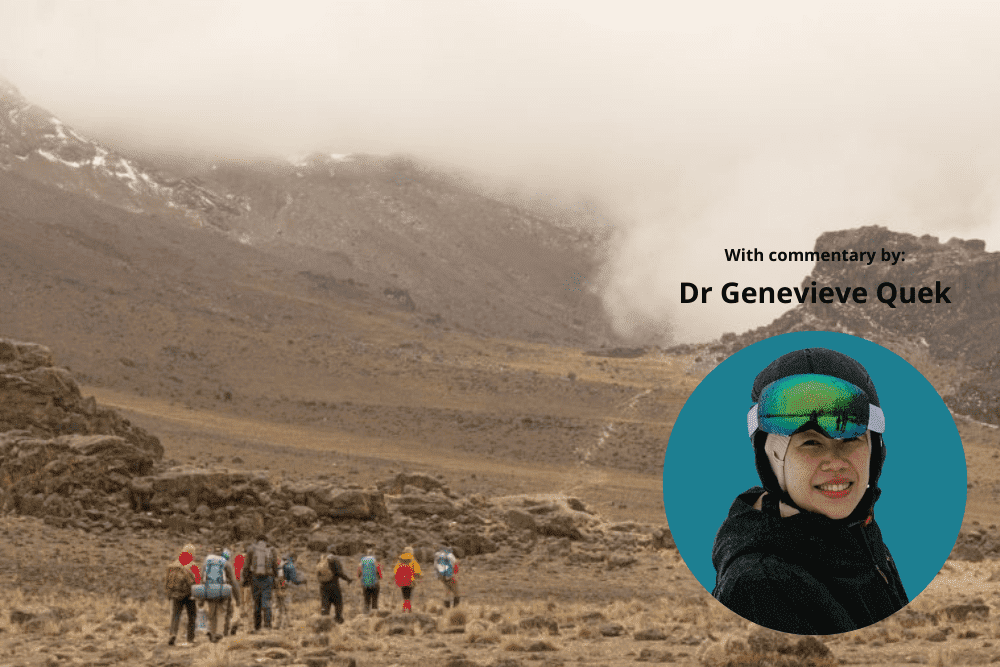A 28-year-old Singaporean, Darrel Phee, lost his life while attempting to climb Mount Kilimanjaro.
His tragic death sheds light on the potential dangers of high-altitude climbing and acute altitude sickness, even when safety measures are in place.
Tragic Ascent
Darrel Phee embarked on an expedition to scale Mount Kilimanjaro, the highest peak in Africa. Scheduled between Aug 3-11, the trek was led by Adventures Unlimited, which monitored oxygen levels and heart rate daily.
On the summit day, his oxygen levels plummeted and his heart rate soared, leading to the decision to abort the climb. Though closely monitored at the base camp, his condition worsened, eventually leading to his death. The cause was identified as asphyxia and high-altitude pulmonary edema (HAPE), an extreme form of acute altitude sickness.
Adventures Unlimited, the organiser of the expeditition, stressed that fatalities on Mount Kilimanjaro are rare, affecting less than 1% of climbers. Nonetheless, factors like high altitude, extreme weather, and individual physical conditions can contribute to such tragedies.
Medical Perspective
High-altitude pulmonary oedema, or HAPE, occurs when the body’s lungs produce excess fluid, causing breathlessness or fatigue. This medical condition can be fatal, particularly in high-altitude settings.
Dr Genevieve Quek, doctor and director at M+M Medical Pte Ltd and avid outdoor traveller, shared that “Acute altitude sickness symptoms are similar to an alcohol hangover; headache is the most typical symptom, usually accompanied by anorexia, dizziness, fatigue, nausea, or vomiting. These symptoms usually start 2–12 hours after reaching a high elevation and they usually resolve after 12-48 hours if there is no further ascent.” HAPE is a more serious and potentially fatal condition that is a complication of acute altitude sickness.
Emily Lim, sales director of Amazing Borneo, shared “based on our experience with thousands of climbers on Mount Kinabalu (4,095.2 m above sea level), most people will be fine up to 2500m altitude. Those prone to altered mental status (AMS) might gradually experience it when climbing higher beyond this point. This can happen to ANYONE, regardless of their fitness level.”
Recommendations
Dr Quek adds that during the climb, it is important to “allow yourself ample time to ascend, stay hydrated, and avoid alcohol for the first 48 hours at elevation. Consider Acetazolamide, it may hasten acclimatization to high-elevation hypoxia. Most importantly, know your body and spot the symptoms”
Dr Quek warns that if a climber starts feeling symptoms, to “stop ascend immediately, consume supplemental oxygen if available, and use NSAIDs and antiemetics to ease symptoms. Additionally, if symptoms do not improve or worsen, descent is mandatory.”
Emily Lim added to “Take sips of water along the way rather than gulping down water, especially if you are in a cool/cold environment that doesn’t cause much perspiration with exertion. Also, at around 3000m level, it’s better to take a night’s break and monitor your own body. Proceed further when you feel your body is good to go.”
A Grim Reminder
This incident follows another mountaineering tragedy involving a Singaporean earlier in 2023. Mr Shrinivas Sainis Dattatraya went missing after summiting Mount Everest, succumbing to high-altitude cerebral oedema (HACE).
Conclusion
Mount Kilimanjaro attracts around 30,000 climbers annually, with fatalities ranging between three and ten a year. This tragic event underscores the inherent risks and emphasizes the importance of understanding the medical challenges of high-altitude activities. It also calls for climbers, especially those in Asia, to take every precaution in preparation and during the climb to prevent such heartrending outcomes.

